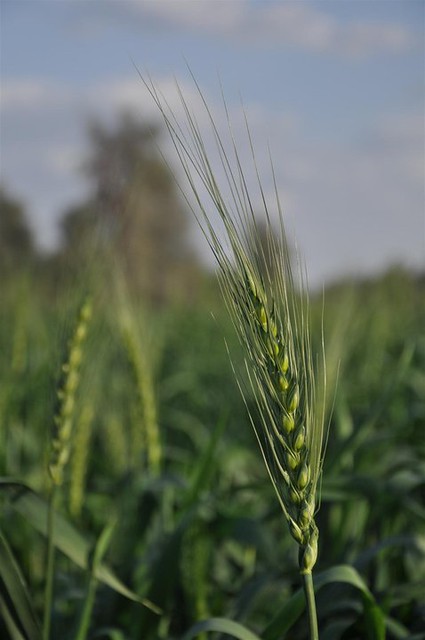... all across Central Asia, the Middle East and North Africa
 |
| Photo from Baluchistan on Flickr |
The notion that GM is simpler, quicker and more certain than conventional crop development should finally be laid to rest by the news of the release of the latest conventionally-bred wheat variety. This could and should revolutionise wheat production across Central Asia, the Middle East and North Africa.
The new, non-GM super-wheat is resistant to two devastating forms of fungal infection and has up to 15% yield improvement. These two diseases, stem rust fungus Ug99 and yellow or stripe rust, are wind-borne, and cause wide-spread damage which can wipe out 40% of the harvest. The new varieties do no contain a simplistic single extra gene as in the British GM aphid-repellent strains, but have several genes which together provide the plant with a varied and effective defense. The wheat is especially relevant to developing countries because farmers there don't have access to the fungicides available to deal with the fungal problem.
The wheat expert who bred the fungus-resistant strain pointed out that one of the biggest obstacles in bringing his new wheat to the people is the lack of appropriate seed distribution infrastructure. This problem will only be remedied if national governments, helped by international bodies, take action to promote the changes needed. And, if wheat is kept free from the meddling of the biotech industry.
OUR COMMENT
Our UK Department for International Development (DFID) could do a huge amount to bring the benefits of the new, non-GM, fungal-resistant wheat to many developing countries. Try asking it.
SOURCE
Naomi Antony, 'Super wheat' resists devastating rust, www.scidev.net, 17.06.11
No comments:
Post a Comment
Thanks for your comment. All comments are moderated before they are published.